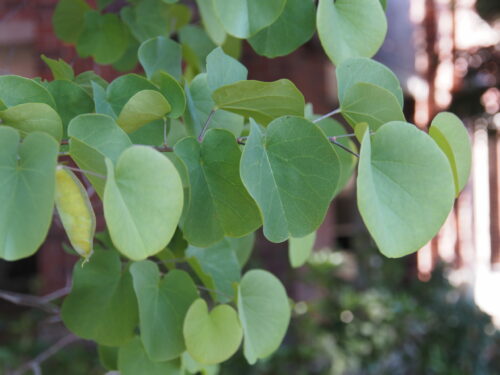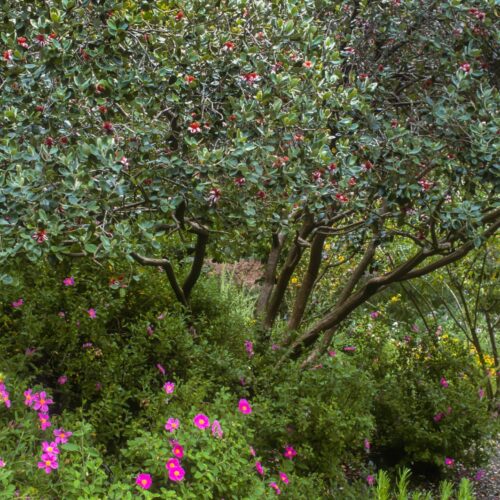Water conservation is an essential consideration when designing and managing Sonoma and Marin County landscapes. Our area enjoys a Mediterranean climate characterized by wet winters and long, dry summers with little rainfall. Plants that are suited or adapted to local conditions not only use less water but generally grow more successfully and robustly, with fewer insect and disease problems. They ultimately create a healthier, more beautiful and more sustainable landscape.
Below is a hand selected plant list for Sonoma and Marin counties that displays mostly native species that will thrive in our climate. You can search, filter and save specific plants to your plant list and also print plant cards.
-
California Native
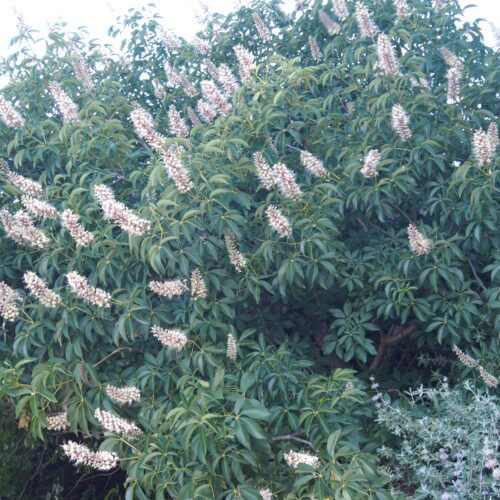
California Buckeye
Aesculus californica -
California Native
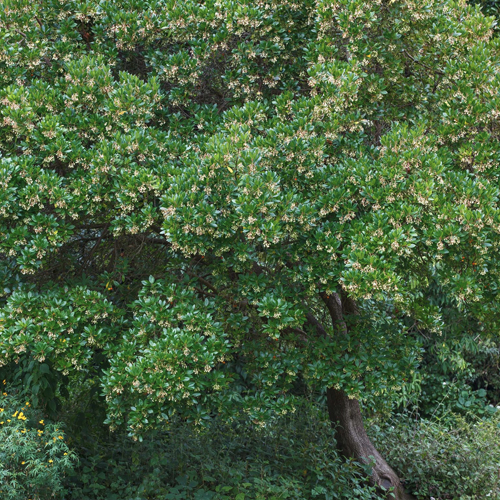
Arbutus, Strawberry Tree
Arbutus spp & hybrids -
California Native
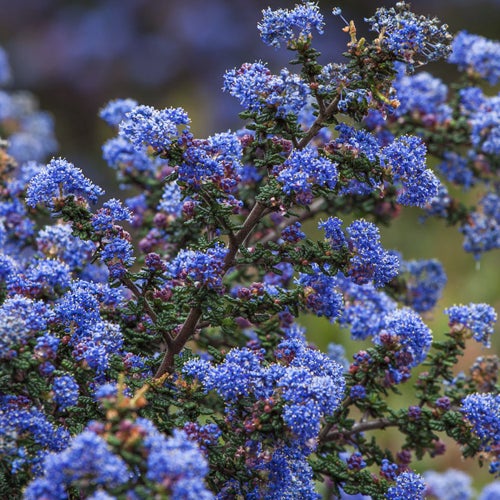
Ceanothus, California lilac, 'Ray Hartman'
Ceanothus spp & cvs -
California Native
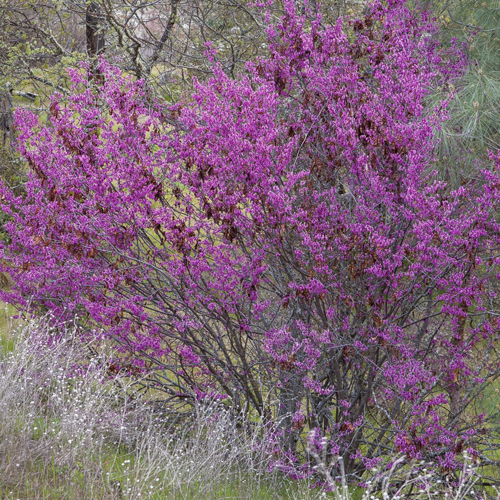
Western Redbud
Cercis occidentalis -
California Native

Desert Willow
Chilopsis linearis -
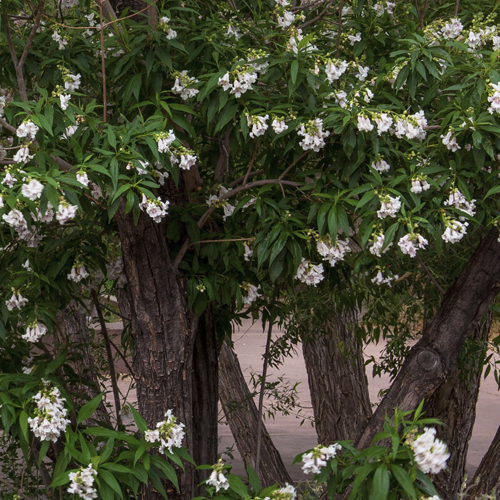
Chitalpa
Chitalpa tashkentensis -
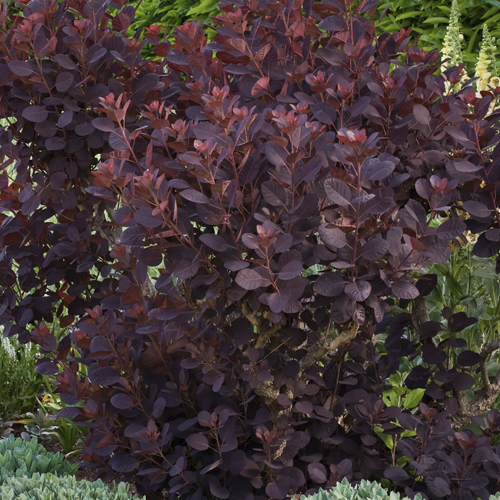
Smoke Tree
Cotinus coggygria -
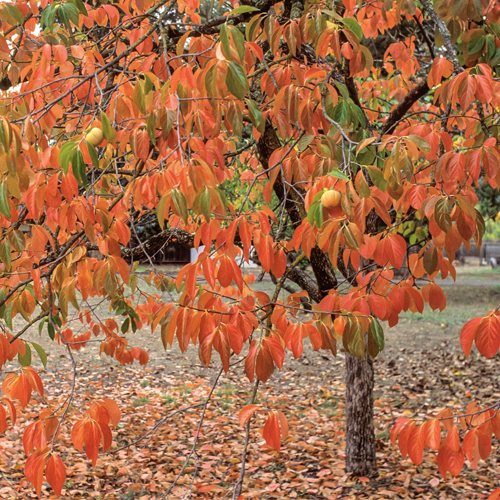
Japanese Persimmon
Diospyros kaki -
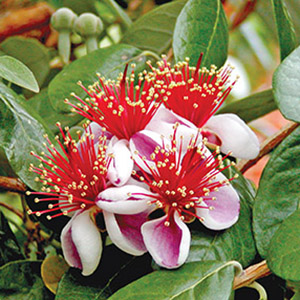
Pineapple Guava
Feijoa (Acca) sellowiana -
California Native
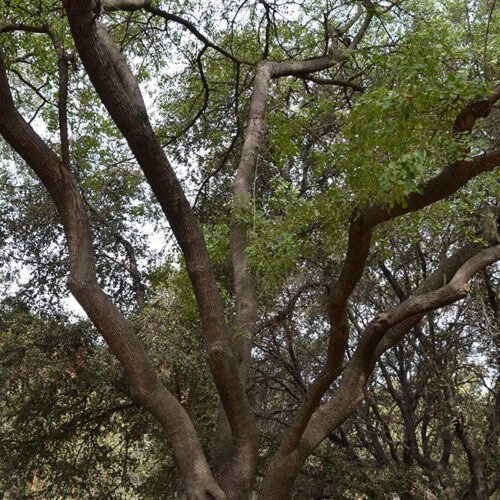
California Ash
Fraxinus dipetala -

Crape Myrtle
Lagerstroemia indica -
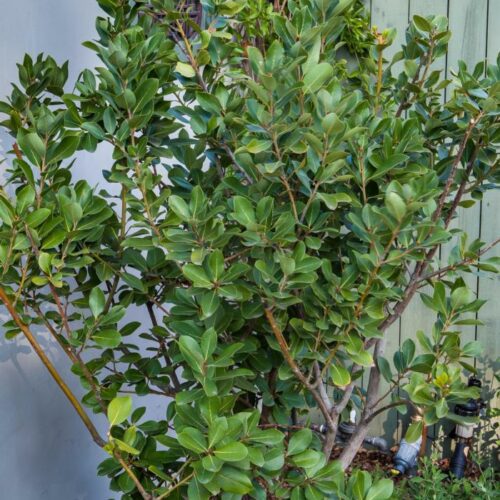
Saratoga Laurel
Laurus 'Saratoga'


California Buckeye
Aesculus californica
CA Native, Shrub, Tree
Care:

Full Sun

Very Low

Well Drained
Look:

Medium
size

Green
leaves

White
flowers
California Buckeye
Aesculus californica
CA Native, Shrub, Tree
Care:

Full Sun

Very Low

Well Drained
Look:

Medium
size

Green
leaves

White
flowers
Large, multi-trunked shrub or small tree. Silvery gray bark with green leaves and clusters of fragrant white flowers. Summer deciduous, defoliating in early July and growing during wet winter and spring months. Only buckeye native to California, small trees are found in Southern regions while large shrubs are found in Northern regions.


Arbutus, Strawberry Tree
Arbutus spp & hybrids
CA Native, Shrub, Tree
Care:

Full Sun

Partial Shade

Low

Well Drained
Look:

Medium
size

Small
size

Green
leaves

Green - Dark
leaves

White
flowers
Arbutus, Strawberry Tree
Arbutus spp & hybrids
CA Native, Shrub, Tree
Care:

Full Sun

Partial Shade

Low

Well Drained
Look:

Medium
size

Small
size

Green
leaves

Green - Dark
leaves

White
flowers
Group of evergreen trees and large shrubs with attractive foliage and bark, small urn-shaped flowers, and reddish fruit. Prefer sunny locations and well-drained soil. A. ‘Marina’ (20-30’ – 15-30’) and A. unedo (strawberry tree, 15-30’ x 15-30’) are most commonly planted in California landscapes, either as multi-stemmed or single-stemmed, large shrubs or trees. While the two trees are similar in appearance, A. ‘Marina’ has cinnamon-brown shedding bark, whereas the bark of A. unedo is more brown. A. menziesii (madrone, 20-100’) is native to the west coast of North America, including the foothills of Sonoma and Marin counties. A. menziesii is less common in landscapes as it is notoriously difficult to establish.


Ceanothus, California lilac, 'Ray Hartman'
Ceanothus spp & cvs
CA Native, Ground Cover, Shrub, Tree
Care:

Full Sun

Partial Shade

Very Low

Low

Well Drained
Look:

Large
size

Medium
size

Green
leaves

Green - Dark
leaves

Blue
flowers

White
flowers
Ceanothus, California lilac, 'Ray Hartman'
Ceanothus spp & cvs
CA Native, Ground Cover, Shrub, Tree
Care:

Full Sun

Partial Shade

Very Low

Low

Well Drained
Look:

Large
size

Medium
size

Green
leaves

Green - Dark
leaves

Blue
flowers

White
flowers
Ceanothus is a group of fast-growing, evergreen shrubs that vary from groundcovers to small trees, many of which are native to California. They provide a spectacular display of flowers in spring that will attract a multitude of pollinators. Flowers are followed by seeds that provide food for birds. The clusters of tiny flowers range from white to deep violet. Plants perform best with good drainage and minimal irrigation once established. Some do best in cooler coastal climates, but many thrive in hotter inland climates. Pay close attention to the mature size when selecting ceanothus to ensure that it has sufficient space for its natural form.
Groundcovers: C. ‘Centennial’ (1’ x 8’), C. gloriosus var. gloriosus ‘Anchor Bay’ (2’ x 8’), C. griseus var. horizontalis ‘Diamond Heights’ (variegated, 1’ x 4’), C. griseus var. horizontalis ‘Yankee Point’ (3’ x 12’), C. maritimus (2’ x 6’).
Shrubs: C. ‘Blue Jeans’ (6’ x 6’), C. Concha (6’ x 6’), C. ‘Dark Star’ (6’ x 8’), C. ‘Joyce Coulter’ (4’ x 12’), C. ‘Julia Phelps’ (8’ x 10’), C. cuneatus (8’ x 8’), C. thyrsiflorus ‘Skylark’ (4’ x 6’).
Large shrubs: C. ‘Frosty Blue’ (10’ x 12’), C. thyrsiflorus (20’ x 20’), C. t. ‘Snow Flurry’ (white flower, 20’ x 20’).
Trees: C. ‘Ray Hartman’ (15′ x 15′)


Western Redbud
Cercis occidentalis
CA Native, Tree
Care:

Full Sun

Partial Shade

Very Low

Most Soils
Look:

Small
size

Green
leaves

Violet
flowers
Western Redbud
Cercis occidentalis
CA Native, Tree
Care:

Full Sun

Partial Shade

Very Low

Most Soils
Look:

Small
size

Green
leaves

Violet
flowers
Western redbud is an ornamental, multi-trunked and deciduous, large shrub or small tree with year-round interest that provides a California native and very low-water alternative to the moderate-water Cercis canadensis. Magenta to rosy pink blossoms that resemble pea flowers cover bare branches in late winter to early spring. Apple green, heart-shaped leaves emerge to accompany the flowers. Over the summer, the leaves become more leathery and bluish green, and seed pods mature and remain into the winter months.


Desert Willow
Chilopsis linearis
CA Native, Tree
Care:

Full Sun

Very Low

Low

Well Drained
Look:

Small
size

Gray Green
leaves

Green
leaves

Pink
flowers

Purple
flowers

White
flowers
Desert Willow
Chilopsis linearis
CA Native, Tree
Care:

Full Sun

Very Low

Low

Well Drained
Look:

Small
size

Gray Green
leaves

Green
leaves

Pink
flowers

Purple
flowers

White
flowers
Chilopsis linearis is a deciduous shrub or small tree. Noted for fragrant, showy flowers in the spring and summer seasons. They are often multitrunked and fast-growing getting up to 15-30 feet tall and 10-20 feet wide. Holds foliage with occasional summer irrigation.


Chitalpa
Chitalpa tashkentensis
Tree
Care:

Full Sun

Low

Well Drained
Look:

Green
leaves

White
leaves
Chitalpa
Chitalpa tashkentensis
Tree
Care:

Full Sun

Low

Well Drained
Look:

Green
leaves

White
leaves
Fast-growing, medium-sized, deciduous tree with clusters of showy trumpet-shaped flowers from late spring to fall. Chitalpa is a sterile hybrid between Catalpa bignonioides, common catalpa, and Chilopsis linearis, desert willow. It combines the larger flowers of the former and the drought-tolerance of the latter. Since the flowers are sterile, they do not form seed pods or fruit. There are two popular cultivars, ‘Pink Dawn’ with lavender-pink flowers and ‘Morning Cloud’ with white flowers.


Smoke Tree
Cotinus coggygria
Shrub, Tree
Care:

Full Sun

Partial Shade

Low

Well Drained
Look:

Green
leaves

Purple
leaves

Blue
flowers

Purple
flowers
Smoke Tree
Cotinus coggygria
Shrub, Tree
Care:

Full Sun

Partial Shade

Low

Well Drained
Look:

Green
leaves

Purple
leaves

Blue
flowers

Purple
flowers
Popular large, accent shrub or small tree with attractive rounded leaves and unique flowers that resemble puffs of smoke. Available in both green and purple-leaved varieties and grown as a natural multi-trunk or as a standard.
Examples: C. c. ‘Golden Spirit’ (15’ x 15’) produces golden-yellow foliage. C. c. ‘Purpureus’ (15-25’ x 15-25’) has purple leaves that gradually become greener. C. c. ‘Royal Purple’ (12-15’ x 12-15’) has dark purple foliage and purple flowers.


Japanese Persimmon
Diospyros kaki
Tree
Care:

Full Sun

Low

Well Drained
Look:

Small
size

Bronze
leaves

Green - Dark
leaves

White
flowers
Japanese Persimmon
Diospyros kaki
Tree
Care:

Full Sun

Low

Well Drained
Look:

Small
size

Bronze
leaves

Green - Dark
leaves

White
flowers
Small-to-medium-sized deciduous tree with both ornamental and food-production value and low-water requirements. Leaves turn a vivid yellow-orange in the fall before dropping to reveal orange fruits hanging from branches like ornaments from fall into winter or until harvested either by the homeowner or local wildlife. Many cultivars are available with different fruit characteristics and may be purchased either in a container or bare root during the winter months. Rootstock determines overall tree size and is typically labeled as dwarf, semi-dwarf, or standard.


Pineapple Guava
Feijoa (Acca) sellowiana
Shrub, Tree
Care:

Full Sun

Partial Shade

Very Low

Low

Well Drained
Look:

Large
size

Medium
size

Green - Dark
leaves

Red
flowers

White
flowers

Brown
bark
Pineapple Guava
Feijoa (Acca) sellowiana
Shrub, Tree
Care:

Full Sun

Partial Shade

Very Low

Low

Well Drained
Look:

Large
size

Medium
size

Green - Dark
leaves

Red
flowers

White
flowers

Brown
bark
Once established, the pineapple guava tree or shrub needs little to no irrigation. The plant grows slowly over the course of a few years and can reach 15-25 feet in height if allowed, though it may be kept to a size of 8×8 feet if pruned regularly. Heavy pruning in the early spring and late summer will ensure a desired shape.
The tree produces small, edible green fruit which naturally fall from the tree in late October-December. Its white and pink flowers bloom in spring or early summer to provide nectar for bees and birds, which ignore the fruit. Likewise, deer seem to be uninterested in this plant.


California Ash
Fraxinus dipetala
CA Native, Shrub, Tree
Care:

Full Sun

Partial Shade

Low

Most Soils
Look:

Medium
size

Green
leaves

White
flowers
California Ash
Fraxinus dipetala
CA Native, Shrub, Tree
Care:

Full Sun

Partial Shade

Low

Most Soils
Look:

Medium
size

Green
leaves

White
flowers
Fraxinus dipetala is a deciduous tree or large shrub. Clusters of lightly fragrant, white flowers in the spring season. Requires pruning to shape when the tree is still young. They are fast-growing up to 15-25 feet tall and 12-20 feet wide.


Crape Myrtle
Lagerstroemia indica
Tree
Care:

Full Sun

Low

Most Soils
Look:

Medium
size

Small
size

Green
leaves

Blue
flowers

Lavender
flowers

Pink
flowers

Purple
flowers
Crape Myrtle
Lagerstroemia indica
Tree
Care:

Full Sun

Low

Most Soils
Look:

Medium
size

Small
size

Green
leaves

Blue
flowers

Lavender
flowers

Pink
flowers

Purple
flowers
Crape myrtle has become a ubiquitous street tree due to its attractive bark, fall color, and flowers all helping to provide year-round interest, as well as being of manageable size and tending not to lift sidewalks with its roots. The most commonly available crape myrtles are Lagerstroemia indica and many hybrids and their shrub forms, which may be less prone to mildew than the species. Flowers occur in late summer in white, pinks, and reddish purple. Crape myrtles are naturally multi-trunked, and plants grown as standards with a single trunk have a tendency to grow suckers that should be removed.


Saratoga Laurel
Laurus 'Saratoga'
Tree
Care:

Partial Shade

Low

Well Drained
Look:

Small
size

Green - Dark
leaves

Green
flowers

Yellow
flowers
Saratoga Laurel
Laurus 'Saratoga'
Tree
Care:

Partial Shade

Low

Well Drained
Look:

Small
size

Green - Dark
leaves

Green
flowers

Yellow
flowers
Small, slow growing bay tree or large shrub. ‘Saratoga’ in the late winter/early spring display small, pale yellow flowers. Can tolerate poor soils but prefers well drained. Leaves have culinary value and are resistant to insect problems.
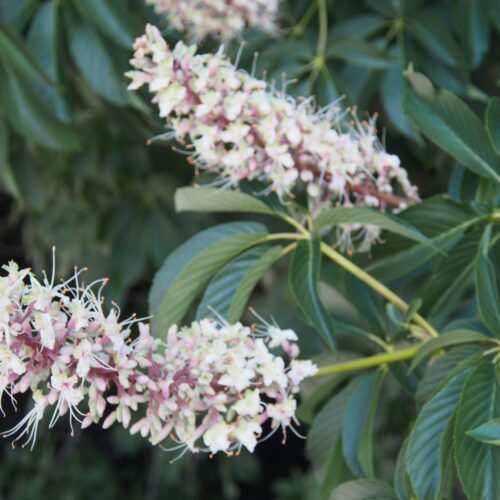
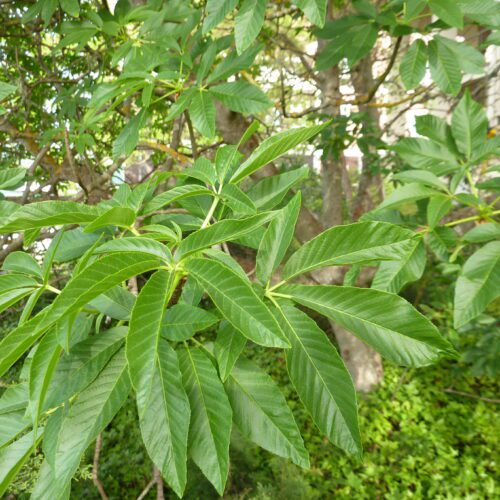
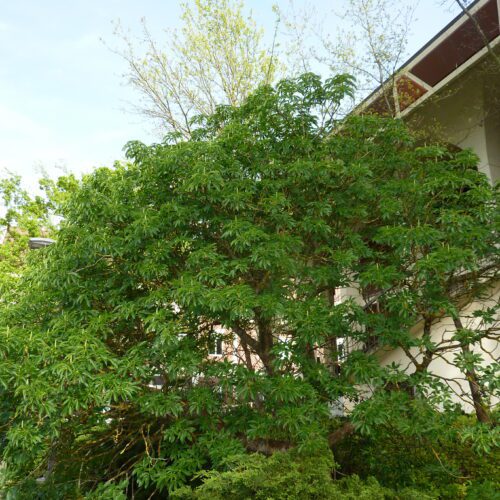
 Print this plant card
Print this plant card
